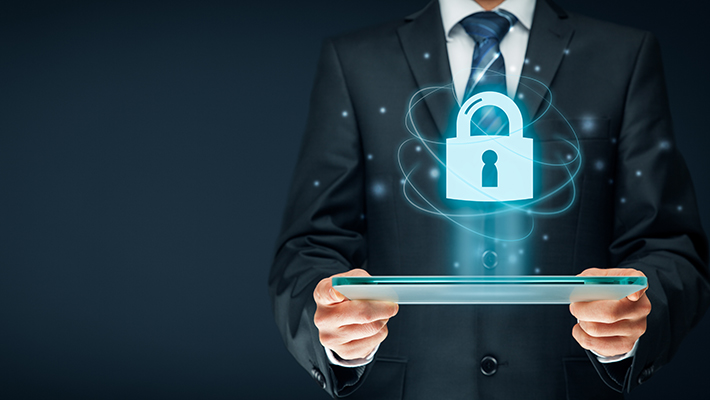Cyber security is the use of technology and processes to defend against cyberattacks on systems, networks, devices, and programs.
Cybersecurity refers to the practices and technologies that are used to protect computer systems, networks, and devices from digital attacks, theft, and damage. These attacks can come in the form of viruses, malware, ransomware, and other types of malicious software, as well as hacking and phishing attempts. Cybersecurity is an increasingly important issue as more and more of our personal and professional lives are conducted online.
One of the main ways to protect against cyber attacks is to keep software and systems up to date with the latest security patches and updates. These updates often include fixes for vulnerabilities that have been discovered and exploited by hackers. It’s important to regularly update all software, including operating systems, browsers, and apps, to ensure that they are as secure as possible.

Another important aspect of cybersecurity is the use of strong passwords. A strong password is one that is long, complex, and unique. It should not be a word that appears in the dictionary, and it should not contain personal information such as your name or date of birth. It’s also a good idea to use a different password for each of your accounts, as this makes it much more difficult for a hacker to gain access to multiple accounts if they manage to crack one password.
In addition to using strong passwords, it’s also important to be aware of phishing attempts. Phishing is a type of cyber attack in which the attacker tries to trick you into giving them sensitive information, such as your login credentials or financial information, by pretending to be a legitimate entity. This can be done through fake emails, websites, or social media messages. To protect against phishing attacks, it’s important to be cautious when clicking on links or entering personal information online, and to verify the authenticity of any communication that asks for sensitive information.
Another important aspect of cybersecurity is the use of secure networks and devices. This includes using a secure connection when accessing the internet, such as a virtual private network (VPN), and using secure devices that have been properly configured and are kept up to date with the latest security patches. It’s also a good idea to use security software, such as antivirus and firewall programs, to protect against viruses and other types of malware.
In summary, cybersecurity is an important issue that affects us all. By following best practices such as using strong passwords, being aware of phishing attempts, and using secure networks and devices, we can better protect ourselves and our personal and professional lives from cyber attacks.
According to Kaspersky:
Cyber security is the practice of defending computers, servers, mobile devices, electronic systems, networks, and data from malicious attacks. It’s also known as information technology security or electronic information security. The term applies in a variety of contexts, from business to mobile computing, and can be divided into a few common categories.
· Network security is the practice of securing a computer network from intruders, whether targeted attackers or opportunistic malware.
· Application security focuses on keeping software and devices free of threats. A compromised application could provide access to the data its designed to protect. Successful security begins in the design stage, well before a program or device is deployed.
· Information security protects the integrity and privacy of data, both in storage and in transit.
· Operational security includes the processes and decisions for handling and protecting data assets. The permissions users have when accessing a network and the procedures that determine how and where data may be stored or shared all fall under this umbrella.
· Disaster recovery and business continuity define how an organization responds to a cyber-security incident or any other event that causes the loss of operations or data. Disaster recovery policies dictate how the organization restores its operations and information to return to the same operating capacity as before the event. Business continuity is the plan the organization falls back on while trying to operate without certain resources.
· End-user education addresses the most unpredictable cyber-security factor: people. Anyone can accidentally introduce a virus to an otherwise secure system by failing to follow good security practices. Teaching users to delete suspicious email attachments, not plug in unidentified USB drives, and various other important lessons is vital for the security of any organization.
The scale of the cyber threat
The global cyber threat continues to evolve at a rapid pace, with a rising number of data breaches each year. A report by RiskBased Security revealed that a shocking 7.9 billion records have been exposed by data breaches in the first nine months of 2019 alone. This figure is more than double (112%) the number of records exposed in the same period in 2018.
Medical services, retailers and public entities experienced the most breaches, with malicious criminals responsible for most incidents. Some of these sectors are more appealing to cybercriminals because they collect financial and medical data, but all businesses that use networks can be targeted for customer data, corporate espionage, or customer attacks.
With the scale of the cyber threat set to continue to rise, the International Data Corporation predicts that worldwide spending on cyber-security solutions will reach a massive $133.7 billion by 2022. Governments across the globe have responded to the rising cyber threat with guidance to help organizations implement effective cyber-security practices.
In the U.S., the National Institute of Standards and Technology (NIST) has created a cyber-security framework. To combat the proliferation of malicious code and aid in early detection, the framework recommends continuous, real-time monitoring of all electronic resources.
The importance of system monitoring is echoed in the “10 steps to cyber security”, guidance provided by the U.K. government’s National Cyber Security Centre. In Australia, TheAustralian Cyber Security Centre(ACSC) regularly publishes guidance on how organizations can counter the latest cyber-security threats.
Find out other Software Blogs

